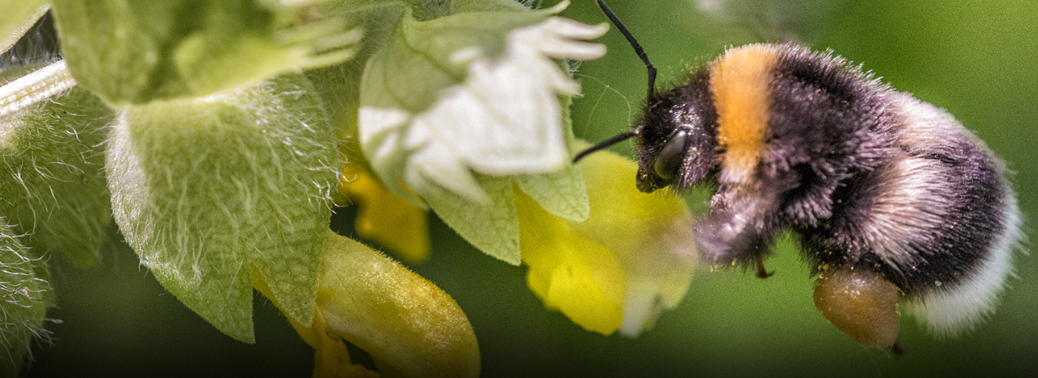Moths are key to Pollination in Himalayan Ecosystem
07, Oct 2018

Prelims level :
Mains level : G.S-III Environmental conservation
Why in News?
- Moths are widely considered as pests, but a recent study by scientists of Zoological Survey of India (ZSI) has revealed that these group of insects are pollinators to a number of flowering plants in the Himalayan ecosystem.
Highlights of the project:
- Under the project titled “Assessment of Moths (Lepidoptera) As Significant Pollinators in the Himalayan Ecosystem of North Eastern India”, scientists collected moth samples from different ecosystem.
- The analysis of proboscis, a long and thread-like organ used to suck flower sap, of a dozen moth species revealed the presence of pollen grains.
- Most of the studies on plant pollinators or plant- pollinator network is focused on diurnal interactions between the insects and plants. This particular study is based on plant- moth interactions, as a nocturnal phenomenon.
- Moths play a vital role as the indicator of our ecosystem. Their hairy bodies help them pick up the pollen from the flowers they land on and carry it far away. In fact, some moth-pollinated flowers, like the yucca (a native plant in the US) have fragrant and white flowers to help the moths see them in the dark.
- The study was carried out in states such as Arunachal Pradesh, Sikkim and West Bengal.
- According to proboscis of different moths belonging to families of moths, such as Erebidae and Sphingidae, were found to contain pollen of several flowering plants, including Rhododendron.
Unique structure:
- On observing the proboscis under scanning electron microscope, it is observed that these structures are not only meant for sap sucking, but are morphological designed for pollination.
- In some species of moths, the organ is found to be modified into a spine like structure and in others, a lateral canal to arrest and disperse pollen.
- Experts also pointed out that similar studies on ascertaining the role of moths in pollination are being undertaken different parts of the world.
- Kailash Chandra, director of ZSI, emphasised that the study was unique, as scientist are looking at a new group of insects (moths) as pollinators. Usually bees, wasps and butterflies are considered as prominent pollinators.
- About 90% of the world’s flowering plants are pollinated by animals. Therefore, pollinators are essential for the genetic exchange among flowering plants and the biodiversity among plants. In India, estimates put the number of moth species at nearly 12,000.
- Researchers have pointed out that almost two-thirds of common large moth species have declined over the last 40 years in some parts of world. One of main reasons for the decline is light pollution (an increase in artificial light in moth habitats).
Indian Himalayan Region:
- The Indian Himalayan Region (IHR), with geographical coverage of over 5.3 lakh kilometre square, extends over 2,500 kilometres in length between the Indus and the Brahmaputra river systems.
- The IHR physio graphically, starting from the foothills in the south (Siwaliks), extends up to Tibetan plateau in the north (Trans-Himalaya). Three major geographical entities, the Himadri (Greater Himalaya), Himanchal (Lesser Himalaya) and the Siwaliks (Outer Himalaya), extending almost uninterrupted throughout its length, are separated by major geological fault lines.
- The region is responsible for providing water to a large part of the Indian subcontinent. Many rivers considered holy like the Ganga and Yamuna flow from the Himalayas.
- NMSHE engages all the 12 states in the Himalayas in spirit of cooperative federalism for the purpose of strengthening their capacities for planning and implementation of climate change adaptation actions, undertaking vulnerability assessment and spreading awareness among the masses on climate change and its likely impacts.
- The Himalayan states include 10 hill states- Jammu and Kashmir, Himachal Pradesh, Uttarakhand, Sikkim, Arunachal Pradesh, Nagaland, Manipur, Mizoram, Tripura, Meghalaya, and two partial hill states, namely Assam and West Bengal.
Facts About the Himalayas:
- The Himalayas are the youngest mountain range in the world.
- The Himalayas are the world’s highest mountain chain.
- The Himalayan mountain range is home to nine of the ten highest peaks on earth.
- The Indian Himalayan Region covers approximately 5.3 lakh sq. km. area.
- The Indian Himalayan Region harbours about 1,740 medicinal plants.






